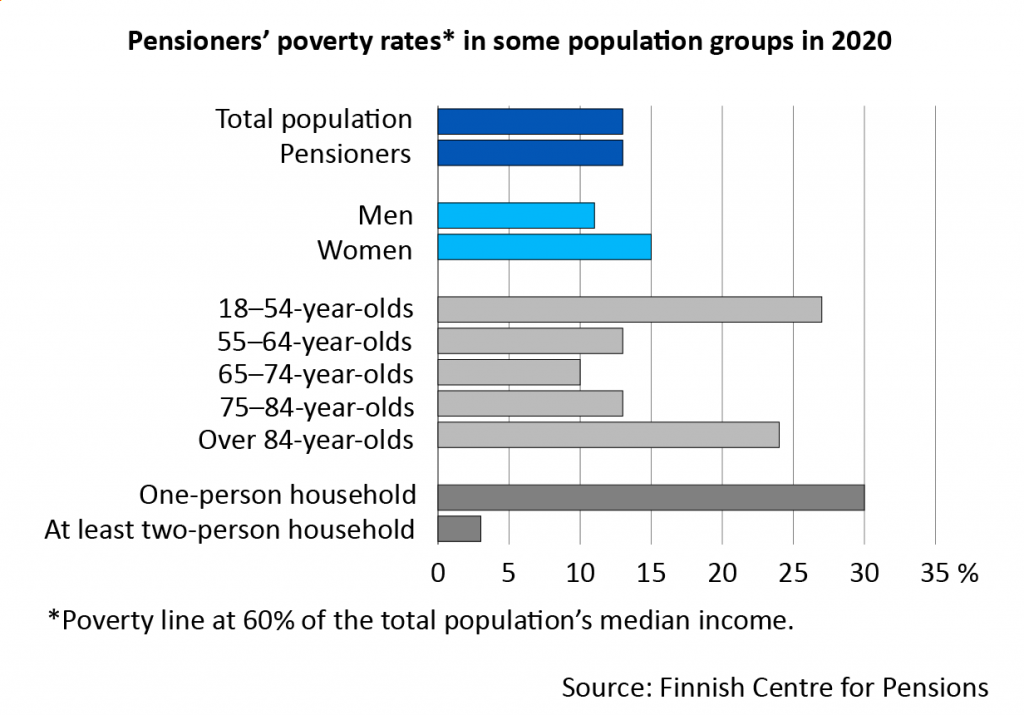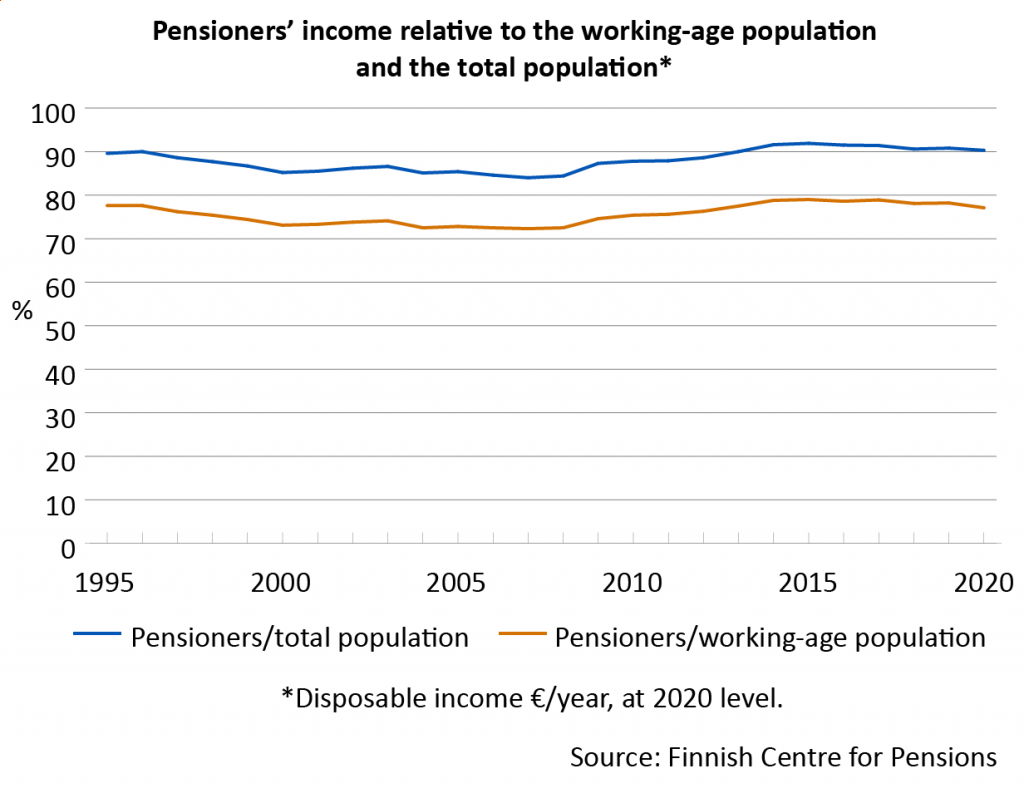Pensioners’ economic wellbeing relative to rest of population unchanged – poverty most common among people who live alone

The average disposable income of pensioners in 2020 was 27,000 euros. Pensioners’ income level relative to the employed population is 77 per cent. The ratio has remained virtually the same over the last decades. Single, particularly under-55-year-olds, have a smaller-than-average income.
An extensive study by the Finnish Centre for Pensions reviews the economic wellbeing of pensioners from 1995 to 2020 via, for example, pensions, income, wealth and perceived economic welfare.
The most well-off pensioners are the 55–74-year-olds who live in a two-person household. Single, particularly under-55-year-olds, have a clearly smaller-than-average income.
“Measured in different ways, the economic wellbeing of pensioners is, on average, relatively good. As in other population groups, there are those who are better off and those who are less well off. Also, compared to other EU countries, Finnish pensioners are slightly better off than average”, says Head of Research Susan Kuivalainen (Finnish Centre for Pensions).
In 2020, the poverty rate of pensioners was 13 per cent, that is, nearly the same as of the total population on average.According to EU’s definition, low-income people are those whose monetary income is under 60 per cent of the median income of the total population.

Income level fairly stable in retirement
The income level of persons who have retired largely reflects the financial status before retirement. However, at retirement, the income gaps even out slightly. For example, the economic wellbeing of those retiring from work decreases somewhat, while the economic wellbeing of those who retire from outside the labour force increases somewhat. In retirement, the income level remains fairly stable.
“Central goals of pension policy are to retain a reasonable pre-retirement consumption level and to prevent poverty.For the main part, the aims are reached when we examine the status of retireesboth in euros and in comparison to other population groups”, says economist Juha Rantala (Finnish Centre for Pensions).
Wealth and family relations affect income
Pensioners’ most important source of income is their earnings-related pension that is based on work. In 2020, the average share of earnings-related pensions of the gross income of pensioners was around 60 per cent, and of the national pension, around five per cent.
“Pensioners’ income is a whole which consists of earnings from work and capital, and in which family plays a great role. For the low-income, the national pension and other minimum security received in one’s own right are emphasised. For those with an average income, earnings-related pensions are emphasised. For the high-income people, the earnings-related pension, the capital income and income from work are the most important sources of income”, explains Rantala.
Many other factors also affect income, such as wealth, health, social relations, housing and the possibility to adjust expenses to income.

Disposable income
A person’s disposable income, or the equivalent income, is calculated based on the household’s disposable income. This includes all income received by the household, such as net earnings and capital income and pensions.
Study: Pensions and pensioners’ economic wellbeing – development from 1995 to 2020

